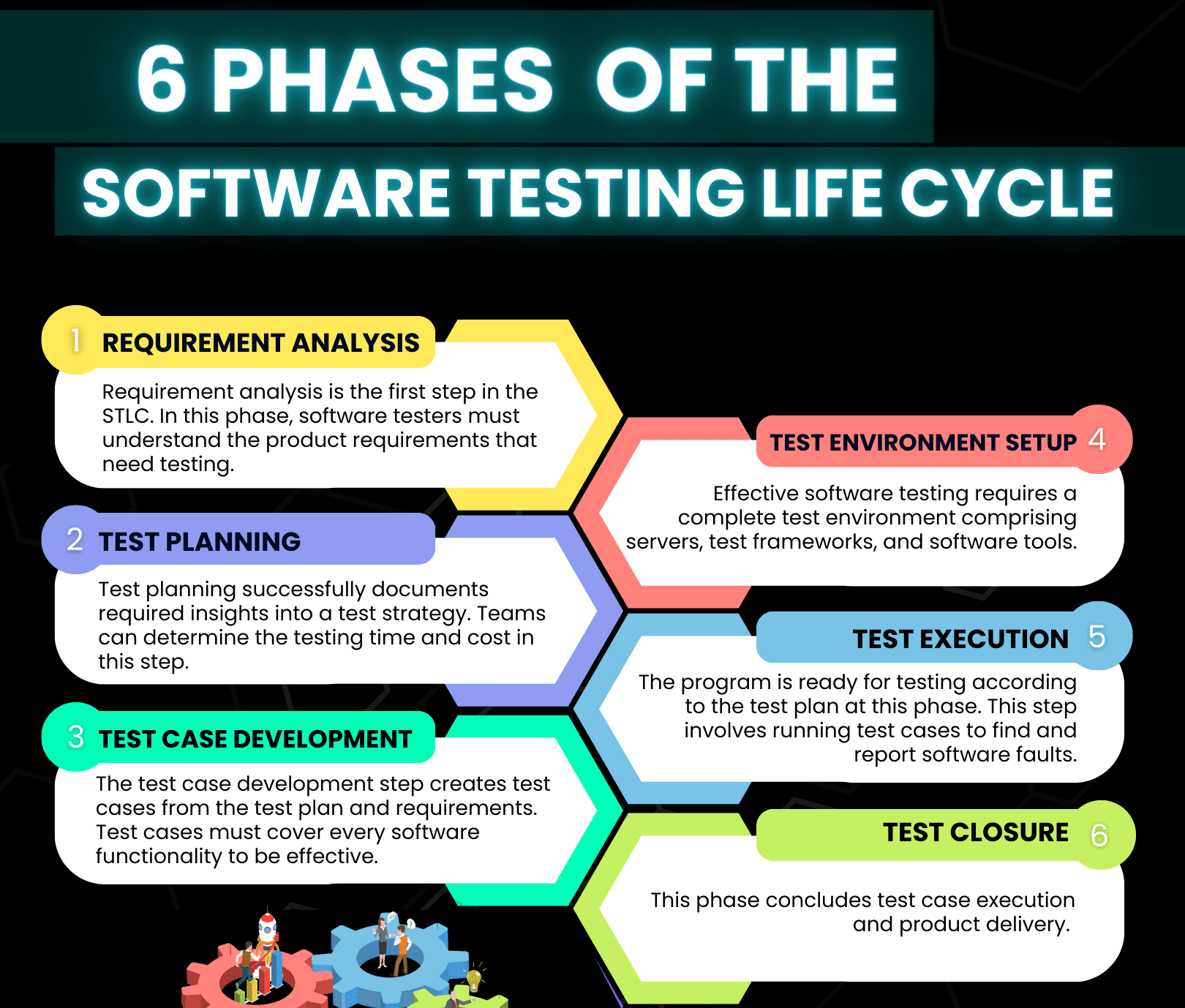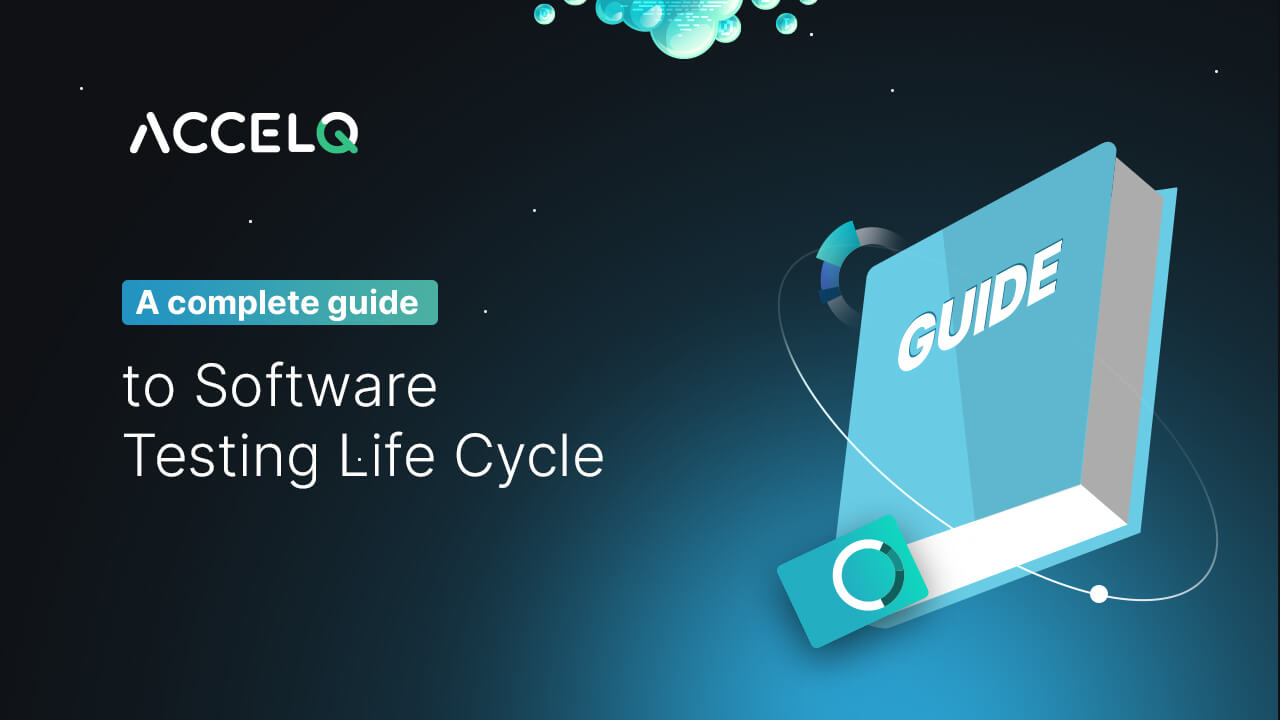Understanding the Software Testing Life Cycle: Beginner’s Tutorial

In today’s fast-paced and competitive world, delivering high-quality software is crucial for success. That’s where STLC comes into play. By implementing STLC, companies have witnessed a remarkable reduction in post-production defects, resulting in significant cost savings and improved customer satisfaction. But first understand what is STLC?
What Is Software Testing Life Cycle?
To put it simply, the software testing life cycle or STLC is the sequence of activities performed during the software testing process.
Among the common misconceptions, software testing is not a one-time activity but a series of activities performed across the entire software development life cycle (SDLC). This is especially true in the age of Agile projects.
Each of the activities in STLC aims to verify and validate the quality of the final product. STLC also promotes the concept of continuous testing, as software products keep transitioning through multiple changes across the entire SDLC. Understanding ‘what is software testing lifecycle’ is key to grasping how these activities contribute to the overall success of software development.
Why STLC over Traditional Methods of Software Testing?
STLC, or the Software Testing Life Cycle, offers several advantages over traditional methods of software testing. Here’s why it’s more effective:
- Early Bug Detection: STLC emphasizes continuous testing throughout the software development process, catching bugs and defects early on. This allows developers to address issues promptly, reducing the overall cost and effort required for bug fixing.
- Improved Quality: By following a structured and systematic approach, STLC ensures thorough testing of software components, resulting in higher quality products. Comprehensive test planning, execution, and reporting help identify and resolve issues before they reach end-users.
- Faster Time-to-Market: STLC integrates testing activities into each phase of the software development life cycle, enabling parallel development and testing. This accelerates the overall development process, ensuring timely delivery of software products to meet market demands.
- Enhanced Customer Satisfaction: With early bug detection and improved quality, STLC helps deliver software products that are more reliable, user-friendly, and aligned with customer expectations. This leads to increased customer satisfaction and loyalty.
- Cost Savings: Identifying and resolving defects early in the development process reduces rework, eliminates costly fixes at later stages, and minimizes the potential impact on project timelines and budgets.
How Does STLC Differ from SDLC?
SDLC is the set of activities performed when developing software or applications. In essence, STLC is a part of the SDLC and restricts its activities to the software testing part. Typically, SDLC comprises the following tasks:
- Gathering software requirements
- Designing the software
- Building and testing the software product
- Deploying the software to the production environment
- Updating and maintaining the software code
On the other hand, STLC comprises:
- Test requirement analysis
- Test planning and development
- Setting up the test environment
- Executing the test cases
Here are other notable differences between SDLC and STLC:
| SDLC | STLC |
|---|---|
| The goal is to achieve the development of high-quality software. | The goal is to achieve end-to-end testing of the software product. |
| Software requirements are collected by the business analyst and communicated to the development team. | QA teams design the test requirements. Based on this, they create test plans. |
| Developers write the software code. | Test cases are created and executed by the QA team. |
| SDLC is completed before the STLC. | STLC starts after SDLC is completed. |
6 Phases of the Software Testing Life Cycle

1. Requirement Analysis
Requirement analysis is the first step in the STLC. In this phase, software testers must understand the product requirements that need testing. For instance, QA teams can study both functional and non-functional requirements and then determine the requirements they need to test.
Typical activities in the requirement analysis phase include:
- Identifying and prioritizing test requirements.
- Ensuring that the QA team members clearly understand the test requirements.
- Designing the Requirements Traceability Matrix (RTM) to trace back every code artifact to the original requirement.
- Identifying any flaws or loopholes in the product specifications.
2. Test Planning
In this phase, the QA team creates the test plan based on the testing requirements. Test planning effectively converts the insights from the requirements phase into a documented test strategy. In this phase, involved teams can determine the time and cost of the testing process.
Typically, this phase comprises the following activities:
- Preparing a test plan based on the defined requirements.
- Selecting the right manual testing or test automation tool.
- Assigning the roles and responsibilities to individual QA team members.
- Identifying any training requirements.
3. Test Case Development
After the test planning phase, the test case development phase is all about creating the test cases based on the test plan and requirements. To be effective, test cases must cover every element or feature of the software. Additionally, QA teams prioritize test cases based on how they would impact product quality.
Here are the main tasks performed in this STLC phase:
- Updating and reviewing the prepared test cases or automation scripts.
- Defining the test conditions for the expected test outcomes.
- Preparing the test data required for the testing.
4. Test Environment Setup
Effective software testing requires a complete test environment comprising servers, test frameworks, and software tools. Additionally, the right test environment must include all configurations that end-users are likely to use.
Here are the main activities involved in this STLC phase:
- Defining the parameters of the test environment, including the hardware and software, test data, and network.
- Performing smoke tests on the built environment.
- Prioritizing and setting up test environments.
5. Test Execution
In this phase, the software application is ready for testing according to the defined test plan. This phase involves executing the test cases to identify and log any software bugs or defects. The QA team also intimates the development team of any reported bugs so that they are fixed on time.
Here are the common activities performed during this phase:
- Reporting bug details arising from executing test cases.
- Retesting the product (after bug fix) for any new defects.
- Using test automation to increase the test coverage.
6. Test Closure
This is the final phase of the STLC. This phase marks the end of test case execution and final product delivery. Based on the test results, the QA team discusses the product quality, project costs, and test coverage. At the end of this phase, the QA teams present a test closure report, which summarizes its test results.
Here are the main tasks performed during this phase:
- Checking deliverables, including test strategy, test plans, and automated test scripts.
- Completing the incident report that details any unexpected behavior observed during the testing.
Download the 100% Free Guide
Master the essentials of advanced approach
to object recognition.

Entry & Exit Criteria in Cycle of Testing
Entry Criteria
Entry criteria are the conditions or requirements that must be fulfilled before testing activities can begin. These criteria ensure that the testing process can proceed effectively. Some common entry criteria in the software testing cycle include:
- Test Plan Completion: The test plan, which outlines the testing objectives, scope, and strategy, should be finalized.
- Test Environment Readiness: The test environment, including hardware, software, and network configurations, should be set up and available for testing.
- Test Data Availability: Sufficient and representative test data should be prepared and accessible to execute test cases effectively.
- Test Resources Allocation: Adequate resources such as skilled testers, testing tools, and infrastructure should be assigned and ready for deployment.
Exit Criteria
Exit criteria are the conditions or requirements that must be met to conclude the testing phase successfully. These criteria determine when testing activities can be considered complete. Some common exit criteria in the software testing cycle include:
- Test Coverage Achieved: The planned test coverage, including functional, non-functional, and regression testing, should be completed, ensuring all critical functionalities are tested.
- Defect Closure: All reported defects should be addressed, fixed, and verified for resolution, reaching an acceptable defect closure rate.
- Test Completion Criteria Met: The predefined completion criteria, such as the number of test cases executed, test cycles completed, and test objectives achieved, should be satisfied.
- Exit Report Generation: A comprehensive exit report summarizing the test results, including the pass/fail status, test coverage, and any open issues, should be generated.
Software Testing Life Cycle Best Practices
- Plan comprehensively: Develop a clear test plan with defined objectives, scope, and strategies.
- Analyze requirements: Understand software requirements thoroughly and validate their clarity and testability.
- Design effective test cases: Create well-defined and comprehensive test cases covering various scenarios and using techniques like equivalence partitioning and boundary value analysis.
- Set up a representative test environment: Establish a stable environment resembling the production setup, ensuring the availability of necessary hardware, software, and configurations.
- Manage test data carefully: Select and prepare relevant test data to cover different scenarios, including valid, invalid, and boundary conditions while maintaining data privacy and security.
- Execute tests systematically: Follow the test plan, execute test cases, record and track results, including pass/fail status, defects, and test coverage.
- Manage defects efficiently: Capture, track, and prioritize defects using a dedicated system, ensuring timely resolution and verification of fixes.
- Generate informative test reports: Create comprehensive reports summarizing test results, including metrics, coverage, and defects, providing clear information for stakeholders.
In summary
An efficient STLC can enhance the efficiency of software testing and the overall product quality. At ACCELQ, we can improve the speed and efficiency of your software testing through our codeless test automation platform.
So, are you looking for an experienced and reliable partner for your software testing requirements? We could be the one. Sign-up today for a free product demo!
Suma Ganji
Senior Content Writer
Expertly navigating technical and UX writing, she crafts captivating content that hits the mark every time. With a keen SEO understanding, her work consistently resonates with readers while securing prime online visibility. When the day's work ends, you'll find her immersed in literary escapades in her quaint book house.
You Might Also Like:
 Testing vs Debugging: When to Test & When to Fix Bugs?
Testing vs Debugging: When to Test & When to Fix Bugs?
Testing vs Debugging: When to Test & When to Fix Bugs?
 Emulator Vs Simulator Vs Real Device: Mobile Testing
Emulator Vs Simulator Vs Real Device: Mobile Testing
Emulator Vs Simulator Vs Real Device: Mobile Testing
 Supercharge Testing with AI: Automate & Accelerate Efficiency
Supercharge Testing with AI: Automate & Accelerate Efficiency
































